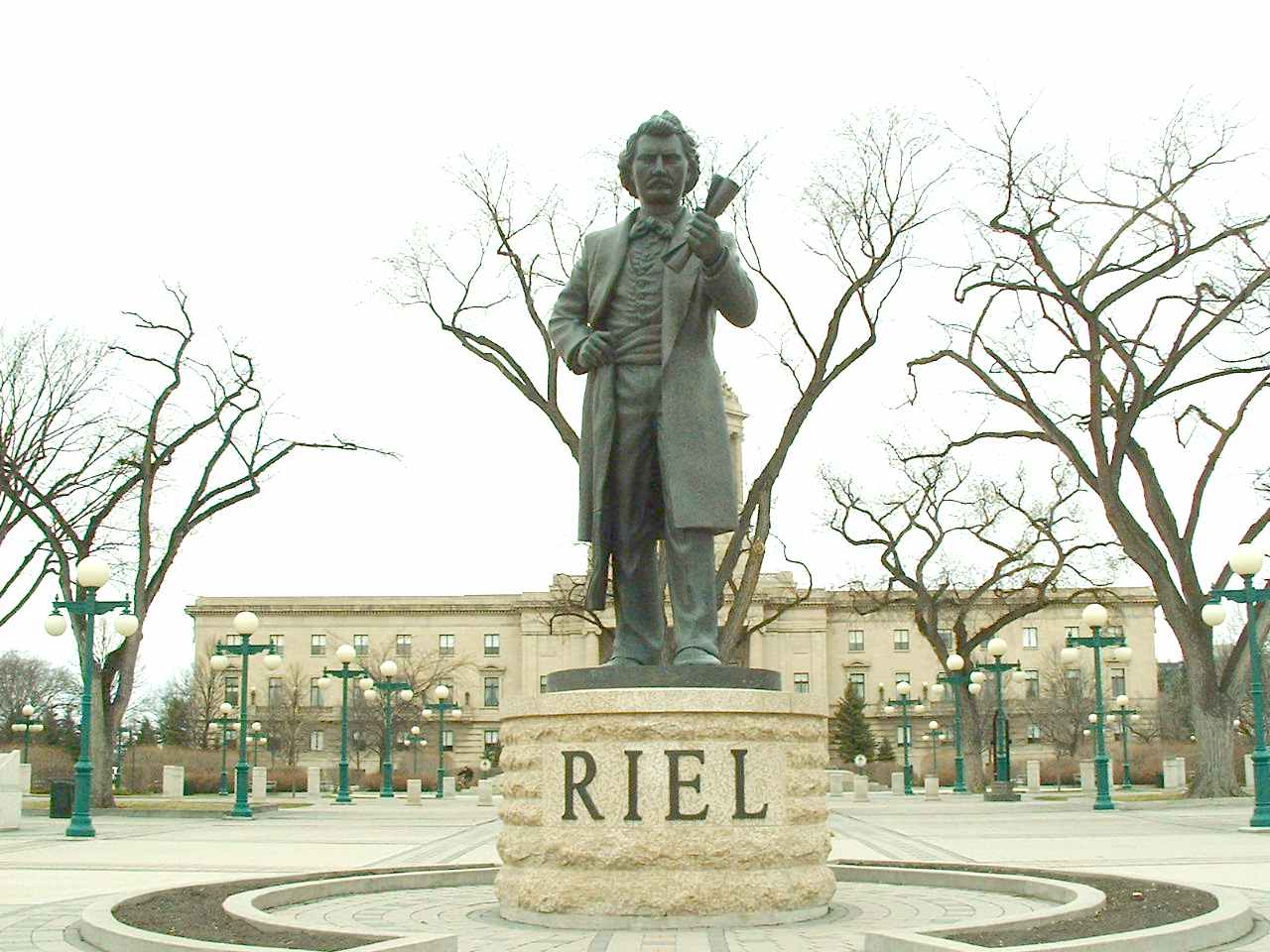 |
| Riel 1870. UofManitoba Libraries |
As Reid writes, "Straddling the dichotomies of the Canadian social body, the man and the myths that have attached themselves to him (as well as to the resistance of 1869-70 and the Rebellion of 1885) might also present themselves to us a 'repeating' elements, signalling a different kind of order to be discerned within a history of disjunction. From this vantage point, it is Riel as the emblem of 'in-between-ness' who expresses a most basic fact of the Canadian experience: that of cultural hybridity or...metissage." (Reid, 81)
 |
| Mackenzie Art Gallery |
Finally, an acceptable statue created by Miguel Joyal was unveiled at the Manitoba legislature in 1996, which, after a full generation of controversy on the grounds was met with general approval of the public. Unanimity is impossible to achieve, however, in historical interpretation as well as aesthetic taste. Reid notes that one pundit claimed Joyal's work was, "just as boring and constipated as the other statues that dot the grounds." (Reid, 4)
Further Reading
Shannon Bower, "Practical Results": The Riel Statue Controversy at the Manitoba Legislature Building", Manitoba History
Sean Kheraj, "Representing and Remembering Louis Riel" Blogpost

No comments:
Post a Comment